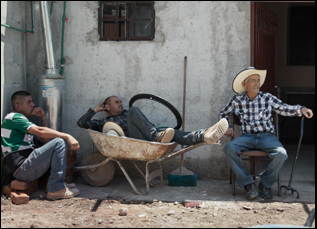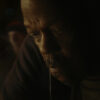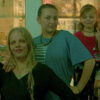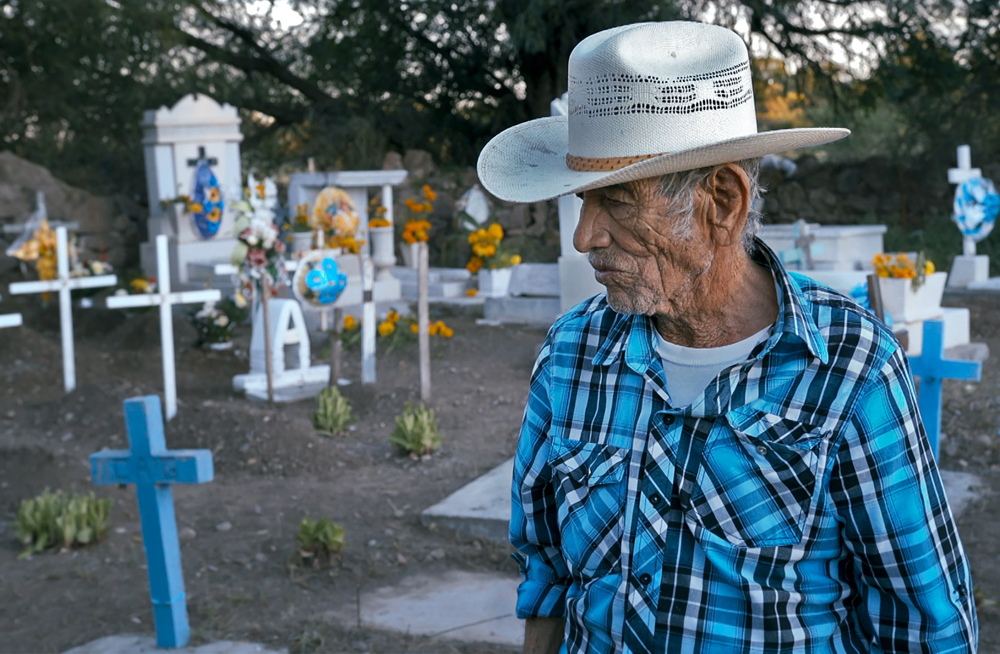When Iliana Sosa set out to direct her first documentary feature following her narrative debut “Detained in the Desert,” she knew she had a leading man in the family, only her grandfather Julian didn’t necessarily know it himself just yet.
“He thought I was more just taking photographs of him,” Sosa said of the long process that would eventually lead to “What We Leave Behind.” “Later, he understood it was a film about him, and he was very open and when I’d go down [to his home of Durango] and film. He’d wake up in the mornings and he’d say, ‘Okay, what are we going to do now? Where are we going to go film?’ He’d take me to different spots in the town and he very much enjoyed the camera and I think the camera also loved him.”
As a widower since the age of 45, the camera’s embrace of Julian as he reaches his eighties becomes particularly affecting in Sosa’s lovely profile of him, blossoming into a grand romance as he lives out his days largely alone otherwise in San Juan Del Rio. To some degree, this is how you’d suspect he’d want it after his wife’s passing, having spent most of his life in the itinerant mode of a bracero, crossing the border to work on what crops were in bloom, but Sosa finds Julian these days set upon building a house as his likely final act. His son Jorge remains by his side, though only able to provide so much assistance when he is losing his eyesight, and Sosa is able to beautifully observe the stoicism and resolve that has allowed Julian to endure many tough periods in his life and carry on while also often putting him at arm’s length from those who care for him.
Shortly before the film’s premiere at South By Southwest this week, Sosa spoke about how special the film became when it allowed her to spend more time with her grandfather in what were ultimately his final years, as well as capturing the uniquely lilting rhythm of life in San Juan Del Rio and coming to take a role in the film, somewhat reluctantly, as it spoke to her entire family.

It’s been quite a while. I’ve been working on this film since 2014 and I’m so excited to share it now with audiences at SXSW. I wanted to document my grandfather’s stories as a bracero and also the 17-hour bus trips he would take between Durango and El Paso and Albuquerque to see our family. He did this for many years while I was growing up, so that was my original intention and then throughout the filming process during the last year of his life, he decided to build a house in his town in Durango. I didn’t expect the film to become what it is now, but throughout the filming process, I realized some of the best footage was in that last year of his life [where] he decided to build this house. My editor Isidore Bethel and looked at all the footage and thought “Wow, there’s something really powerful here.”
Did you actually know much about your grandfather before spending time with him now?
Yeah, he’d make these monthly visits and I always have this image of him coming with his sombrero, bringing goods from Mexico, but I didn’t really have many conversations with him growing up. He also spoke in a dialect for me that was difficult to understand even though I’m fluent in Spanish, so over the course of the film I learned a lot of things that I didn’t know about and didn’t ask when I was younger. The film gave the opportunity to get closer to him and to learn some of those stories of him working as a bracero, but also [how] he was a farm worker in Mexico and he traveled town to town, trying to find work on foot sometimes days on end.
When you were on the ground, was there anything about Julian’s routine you were intent on capturing?
I hope that comes across because he had a very specific routine, like wake up in the mornings and sometimes make his breakfast and when he was working in the house, he’d go and check up on the construction or go into town to buy materials. He was always doing something and my goal was to capture that, to capture his energy in life and in movement that has been such a part of his everyday life.
You also do such a wonderful job in capturing a sense of place in San Juan Del Rio and not only visually, but there were some very subtle sound design choices that were really affecting. How did you go about that?
I worked with an amazing sound designer Lena Esquenazi, who lives in Mexico City [which was] really important to understand not only the language, but also the sense of place. She’s worked on other films like Tatiana Huenzo’s documentary “La Tempestad,” and our approach with the sound design was to uplift this already rich sonic atmosphere that exists in San Juan Del Rio and to balance the subtlety, also with the voiceover sections play around a little more with the sound design there.
In general, how did your role in the film through those voiceovers come abut? They’re quite poetic.
It was not my original intention to have those voiceovers. We did a test screening and [the response was], “I wish more of you was in there.” I didn’t happen to have footage of myself to put in the film, so we thought “Oh, it might be interesting to start exploring voiceover” and I started writing that. Then my editor Isidore and my producer Emma [Miller] would read over those passages and really they helped me structure it. And Isidore really took the material and just ran with it. When I started working with him, I was at a point where I was stuck and didn’t quite know what direction to take and we would sit together and watch footage and I remember he would tell me, “Just send me stuff that you find interesting that might even be upsetting.” It was such a collaborative process and we would have extensive conversations is what you see in the film. The editing is really the key.
It must be special to have this preserved for time. What’s it like getting out into the world?
It feels very surreal. When I first started this project, I had no idea that it would become a feature film and it wasn’t my intention to capture that last year of [Julian’s] life, but I now look at the film poster and our trailer and I can’t help but think “Wow, this is amazing.” It’s remarkable to see how far the film has come but also very iconic now – even his image on the poster, it’s a very interesting feeling and one that I’m very proud of. He now exists in this film and it’s timeless, right? I’m just excited that it’s out there now.
“What We Leave Behind” is screening at select cinemas around the country and will premiere on Netflix on September 30th.




